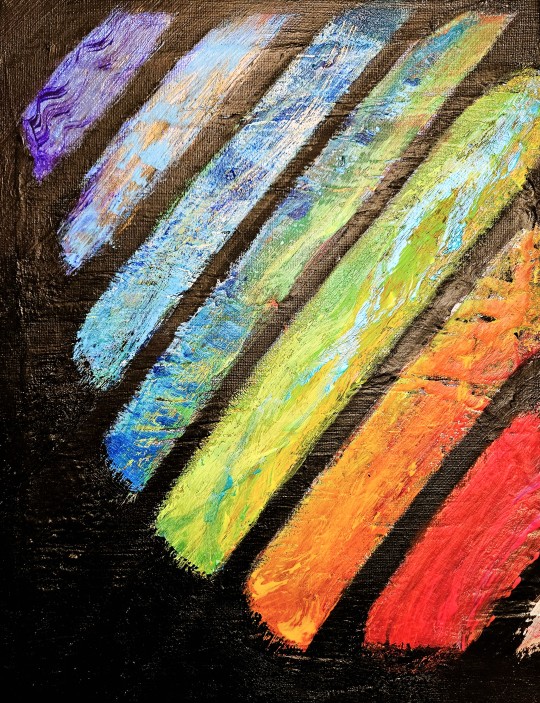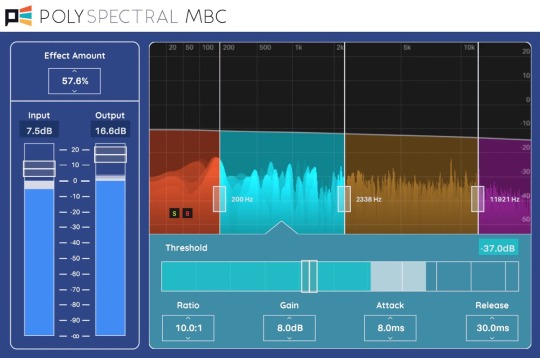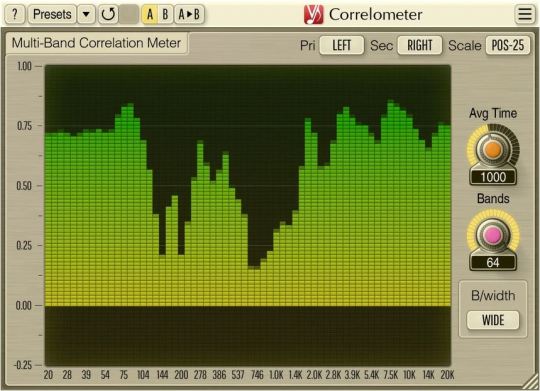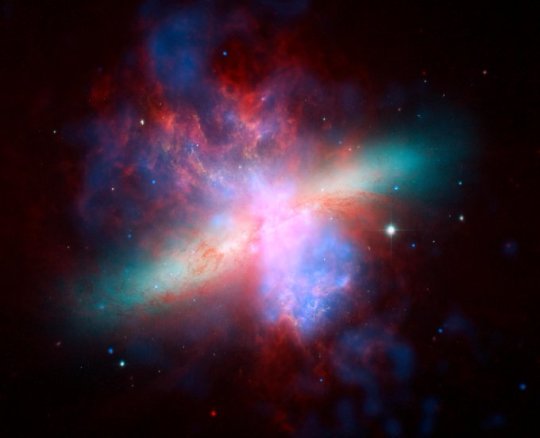#multiband
Explore tagged Tumblr posts
Text

“Multiband Ribcage” - Acrylic paint on canvas
#last art from me for a while folks#art on tumblr#art#art on canvas#paint#painting#acrylic painting#acrylic paint#color spectrum#multiband#ribcage#abstract#abstract art#i can pretty much guarantee there will be more paintings some time in 24'#sorry 23' was so scant on art#i don't paint when i'm uninspired#abstract expressionism#back next week with the best of 23'
109 notes
·
View notes
Text
youtube
Why Does OTT Sound So Good?
#synth#synthesizer#ott#multiband#compressor#plugin#vst#software#ableton#live#musicproduction#sseb#Youtube
2 notes
·
View notes
Text
youtube
The GOLDEN MASTER from Endorphin.es is an end-of-chain signal processor that will shape, meld and polish your sound in all the greatest of ways…head to YouTube now to see this thing in action in our demo, which also features the Korg Monotribe and the ENDORPHIN.ES GHOST…cheers!!
#pedaloftheday#endorphines#goldenmaster#Processor#compressor#multiband#EQ#equalization#pedalsandeffects#effectspedals#guitar#pedals#effects#guitareffects#pedalboard#guitarist#guitars#Youtube
4 notes
·
View notes
Text
I desire a cost-effective receiver.
0 notes
Text
Polyspectral MBC: Multiband Compressor Solution

Polyspectral MBC is a powerful multiband compressor plug-in designed to elevate your audio productions to new heights. Engineered for efficiency and sonic transparency, it boasts ultra-low latency, making it perfect for real-time applications such as tracking and live mixing.

Key Features: - Wide Compatibility: Available in VST3 format for both Windows and Mac, as well as AU format for Mac, ensuring seamless integration with most major DAWs. AAX support is coming soon, with native support for M1/M2 Macs. - Low CPU Usage: Carefully selected and optimized signal processing algorithms guarantee minimal CPU overhead, allowing you to utilize it on every track without compromise. - Negligible Latency: Utilizes minimum-phase filters to perform its functions without introducing noticeable delays, preserving the integrity of your audio. - Elegant Interface: Intuitive parameter adjustment and a real-time spectral display provide clear insights into frequency spectrum and dynamics adjustments, facilitating precise control over your sound. - Sonically Transparent: Designed with mastering in mind, the compression algorithm ensures utmost transparency, adding no undesired color to your mix. - Flexible Bus Layout: Supports all common speaker layouts and Ambisonic formats transparently, offering versatility in routing options. For Game Developers: Polyspectral MBC is also available as a plugin for Wwise, enabling game developers to enhance their game's mix and dynamics in real-time. Visit website for more information or to download and try it for free. With Polyspectral MBC, you can achieve professional-grade compression and dynamic control, whether you're working on music production, post-production, or game development. Elevate your audio to the next level with Polyspectral MBC today. Read the full article
0 notes
Text
Correlometer ~ Multi-band Correlation Meter
Correlometer is an analog-style stereo multi-band correlation meter. Multi-band correlation meter is an advanced way to check for presence of out-of-phase elements in the mix. Broadband correlation metering reports overall phase issues and may misrepresent problems present in select spectral bands, while multi-band correlation meter easily highlights problems present in mid to high frequencies…

View On WordPress
0 notes
Text
got this idea from @dunderbread
#they asked a pretty similar question#but it was multiband#the who#pete townshend#john entwistle#roger daltrey#Keith moon#my posts :)
21 notes
·
View notes
Text
0 notes
Text

The GPS Galileo L1 Band Antenna is a specialized antenna designed to receive signals from both GPS (Global Positioning System) and Galileo satellite systems, specifically those operating in the L1 frequency band.
Here’s a breakdown of the key components and features:
1. GPS and Galileo Systems:
GPS is the U.S.-based satellite navigation system, while Galileo is the European Union’s global navigation satellite system.
Both systems are used for position, navigation, and timing services around the world.
L1 Band is a frequency band used by both GPS and Galileo satellites. It typically operates at 1575.42 MHz and is the most common frequency used by civilian GPS and Galileo devices.
2. L1 Band:
GPS L1 Frequency: The L1 band for GPS (1575.42 MHz) is used by civilian GPS receivers, offering access to accurate position information with the help of GPS satellites.
Galileo L1 Frequency: Galileo also uses the L1 band, but its signal structure differs slightly from GPS’s. The combination of these signals can enhance positioning accuracy and reliability, particularly in challenging environments (like urban canyons or dense forests).
3. Antenna Features:
Dual-Functionality: The L1 Band antenna is designed to simultaneously receive signals from both GPS and Galileo satellites. This dual-constellation reception can improve positioning accuracy and reliability by leveraging more satellites.
Multi-Constellation Compatibility: Some GPS Galileo L1 antennas can also support signals from other constellations (like GLONASS, BeiDou, or QZSS) for even higher precision.
High Sensitivity: These antennas are engineered to pick up signals even in difficult environments with lower signal strength (e.g., in areas with buildings, trees, or other obstructions).
#Gnss antennas#gps antenna usa#Gnss antenna price in uk#Gnss antenna india#Gnss antenna type#Gnss antenna design#Gnss antenna for car#GNSS External Antennas#GPS & GNSS Antennas#GNSS - Embedded Antennas#GPS & GNSS SMART Antennas#Top quality GPS / GNSS antennas#MultiBand GNSS Antenna
0 notes
Text
0 notes
Text

“Multiband Ribcage” - Animated painting
#animated painting#painting#art on tumblr#computer graphics#artgif#gif#multiband ribcage#the light color spectrum#animation#experimental#experimental art#acrylic painting#new painting tomorrow!
85 notes
·
View notes
Text
youtube
Multiband Compression: HOW? WHEN? WHY?
0 notes
Text
Visible light, near and far infrared, and x-rays. The visible light obscuring dust lanes are lit up brightly in infrared. X-rays are blue, maybe. Anyone have an idea what is emitting them?

M82 The Cigar © Hubble+Chandra+Spitzer
887 notes
·
View notes
Text
after some experimentation, compressors are boring and playin w/ one feels bad
#way 2 complicated 2 build for the minor sound improvements#might try a multiband one at some later time or smth w/ a hpf on the compression side chain def coppin a pcb for that tho
0 notes
Note
i like your songs! the sense of style & originality in the composition is something i love in voca songs. i was wondering if u have any kind of production tips you'd be okay with sharing. personally i get stuck on mixing/mastering a lot, but i'm curious what your work flow's like!
So as for production tips, I think that it really comes down to the type of music you're making, and your own personal preferences for sound. For context here, I mix using Cakewalk and it's default plugins, since I don't have FL Studio.
I always start with compression when mixing, so that the volume is already normalized when I begin editing everything else. I usually use a regular compressor and lower it to about -12 or until the volume at the loudest parts is no longer clipping or peaking, but for more tinny sounding vocals, I'll use a multi-band compressor to lower the high parts specifically without muddying the rest of the channels. After that I move onto adjusting the EQ and reverb; I personally prefer more crisp, dry sounding vocals, so when doing EQ and reverb, I adjust the high end until the vocals sound clear but not loud, and lower the rightmost part if the vocals get too loud.
For reverb, I lower the timing/tail of the reverb as low as it will go so that the vocals don't sound super echoey, or like they're coming through a tube. Then I'll adjust the size and width of the vocals until they mix well with the music without sounding echoey. However, if a song I'm doing requires a more echoey or wide sound, I'll turn the reverb up just enough to get it to echo, then after that I'll adjust the tail until I get the desired effect. I rarely use delay, but when I do, I always use it sparingly, because it can easily overwhelm the instruments and bleed into parts I don't want.
A big thing to remember is that automation is your best friend. I used to just cut up tracks and have different effects for those tracks, but then I learned how to use automation. If you need more reverb or less crisp vocals in a certain spot, take advantage of the automation tracks to adjust the levels along the timeline. One big thing to look out for when automating reverb and delay, is that even after lowering the levels of what you want, the effect will still be applied to the part for a few measures afterward, and will take a second to wear off your vocals. I found this out when making Keshi Ga Saku Tokoro, as the reverb from the chorus kept bleeding into the second verse and making it sound too hollow; I fixed it by moving the automation points for all my reverb and delay back by about two to three measures. I have no clue why it works this way, but it just does.
I have no clue how to master, I just throw gain, EQ, a multiband compressor, and whole bunch of other junk onto the master track and play with it until it sounds loud and even. Occasionally, since I make my instrumentals in Bandlab, I'll just throw my unmastered track in and "cheat" by using the auto-mastering feature, although that tends to be a bit iffy if I'm looking for a certain effect for my music, as it may dampen certain parts that I want to be loud.
That's really all I have in the way of tips, but if you want to know my workflow, I start by making a beat to work off of, and adding a bassline to that. Then I'll take a piano or pad and try to find some notes that sound good next to each other, and by good I mean they sound like I want them to, not consonant. Sometimes I want a more dissonant sound that doesn't resolve. Then I'll turn those notes into chords and play with the timing and rhythm until I get something good, then I'll add a few more layers with different instruments that have the same or similar patterns.
For bass instruments, I'll remove the chord and only use the base notes, lowering them a couple of octaves. For middle instruments, I'll copy the chords, and then paste them in at a lower octave to make them feel fuller, and for higher instruments, I'll simply move the chords higher. After that I spend several days crying about how I'm unable to achieve the exact sound and pattern that I have stuck in my head, before I give up and make something else entirely that sounds absolutely nothing like I had in mind, because I don't actually know what I'm doing.
Next, I'll move my unmastered instrumental into my vocal editor of choice, usually VOCALOID, and agonize over what vocal pattern I should use. Once I get a nice vocal melody, I'll scrap half of it and redo them because I suddenly realize that they sound boring and weird, then I'll cry and give-up for about two days, or even a week before I come back to try again. Then I'll announce the song way too early before I'm finished with it, in hopes that it will give me the motivation to complete the song, only for me to immediately fall into a creative slump where I can't do anything and I feel exhausted. I then delete the announcement and come back a month later when I'm actually done by some miracle, and then try again, but this time with a finished product.
And that's really about it. I hope this was helpful!
8 notes
·
View notes
Text

Study unveils contributions to superconductivity in the vortex lattice structure of 2H-NbSe₂
Superconductivity is a quantum property of materials entailing an electrical resistance of zero at very low temperatures. In some materials, multiple electronic bands are known to contribute to the emergence of superconductivity, leading to multiple superconducting energy gaps. This phenomenon is referred to as multiband superconductivity. Researchers at Lund University in Sweden, Institut Laue Langevin in France and other institutes in Europe recently carried out a study aimed at better understanding the multiband superconductivity emerging in the transition metal dichalcogenide 2H-NbSe2, which exhibits a vortex lattice when exposed to a magnetic field. Their findings, published in Physical Review Letters, unveil two key contributions to the superconducting state observed in this material.
Read more.
10 notes
·
View notes